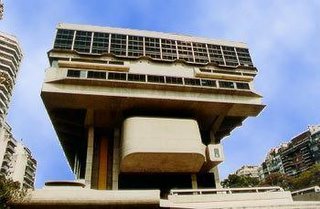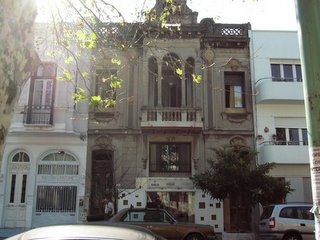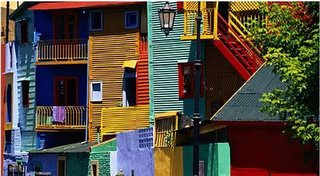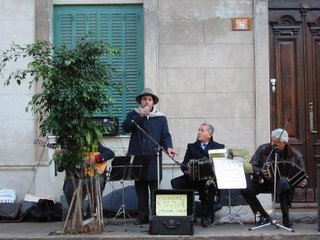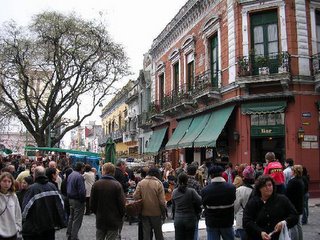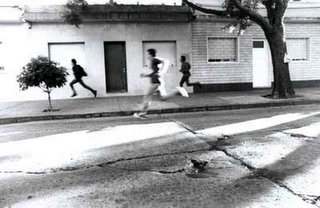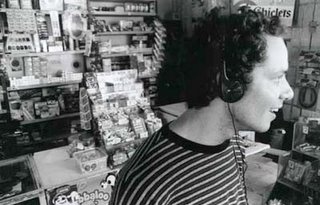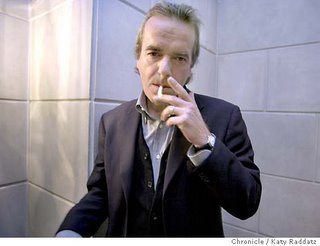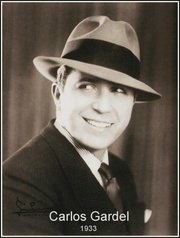Uruguay's struggle for identity
By Jan Rocha
BBC News, Uruguay
Uruguay is one of the smallest nations in South America and although it is sandwiched between the two colourful giants of the region, Argentina and Brazil, somehow it has maintained its own, more sober identity. Jan Rocha, in the capital Montevideo, has been considering how such a tiny country with almost no industry or natural resources, can make it on its own.
The feeling you often get in Montevideo is that you have entered a time warp.
You have gone back 50 years. Especially if you are coming from noisy, brash Brazil to the north or flamboyant, aggressive Argentina to the south.
In comparison Uruguay seems serious, discreet, low key.
You walk down long streets of shabby single-storey houses, with wooden shutters, wrought-iron balconies; their colours are fading.
Aging plane trees with peeling bark line the pavements.
At a school, the children are wearing the same white pinafores and floppy black ties their parents and their grandparents wore.
Horses go clip-clopping by, pulling carts piled with paper and plastic.
Old-fashioned shops sell old-fashioned clothes. The El Hornero menswear shop offers dressing gowns, warm pyjamas and plaid slippers.
Sedate
The streets lead straight down to the river Plate, which seems more like a sea, stretching away out of sight.
Uruguay has always been much more egalitarian than most Latin American countries
On the other side is Argentina, Buenos Aires, tango music. Montevideo, in contrast, seems as sedate as a maiden aunt.
With an elderly friend, Marie Esther, I go out to see the suburb she once lived in, 40 years ago.
This is Colon, now rather scruffy, once a fashionable area settled by aristocratic families.
The once elegant little palaces are run down, their gardens overgrown.
Colon is far from the river, because in early days the river was where poor people washed their clothes.
Now the wealthy live as near to the river as they can get, in high-rise apartment blocks along the Rambla.
This is a broad avenue that winds around the edge of the city.
Big moments
At sunset the Rambla fills up with people jogging, walking and fishing. Young people sit on the low walls overlooking the rocky shore, reading books.
They are all drinking, not coke or beer, but mate, the green tea of South America. It is a cosy, placid scene.
But appearances can be misleading. Uruguay has had its big moments.
In 1930, it won the first ever football World Cup. During World War II, Montevideo was the scene of the last real naval battle - without aircraft.
The Battle of the River Plate, as it became known, was fought just a few miles out to sea.
It was so close that Uruguayans raced out along the coastal road in their cars to hear the roar, and see the flash of the guns.
The German warship Graf Spee, scuttled by its captain after being hit by the British, still lies under the water in the river, just 30 feet down.
Anarchists
In the 1960s, the Tupamaros, a left-wing guerrilla group, appeared on the scene.
Inspired by the memory of the European anarchists who had once settled in Uruguay, they kidnapped diplomats, including the British ambassador, raided banks, and made dramatic prison escapes by tunnelling under walls.
But the military took power and Uruguay joined the other South American countries ruled by right-wing generals.
Fear, repression, political prisoners and torture followed.
There are still plenty of reminders of that time in Montevideo. Military installations are everywhere.
In some of them gruesome excavations are now taking place, seeking the remains of political prisoners who disappeared during the dictatorship. One of them was my friend Marie Esther's daughter.
Break with the past
The new President, Tabare Vazquez, has ordered military chiefs to reveal what had happened to the men and women who had disappeared.
Elected by a left wing coalition, President Vazquez, a 65-year-old radiologist, represents a serious break with the past.
For 180 years, presidents came either from the Blancos or the Colorados, the Uruguayan equivalent of liberals and conservatives.
The man he succeeded even had the same name and was the direct descendant of the president who ruled 100 years ago.
Yet in spite of all this tradition, Uruguay has always been much more egalitarian than most Latin American countries.
Almost everybody is literate. Plebiscites are regularly held to decide big political and economic questions. In the last one Uruguayans said "no" to the privatisation of their water.
Priceless asset
President Vazquez promised economic reforms.
He wanted to stem the flow of young people leaving Uruguay to look for work. But so far little has changed. It is not easy.
Uruguay is small, faded maybe, but still altruistic
With such a small population, just over three million people, there is almost no industry.
Uruguay relies on agriculture, and it has not got oil, or gas, or minerals.
Squeezed between the two economic giants of South America, Brazil and Argentina, Uruguay struggles to maintain its identity.
At the Ministry of Foreign Affairs, though, they are optimistic, because Uruguay does have something that one day, could be a priceless asset: water.
Along with three of its neighbours, it lies on top of what is probably the world's biggest subterranean reserve of fresh water, the Guarani Aquifer.
Uruguay is small, faded maybe, but still altruistic.
Not only does it hope one day to be able to export this water, but the left-wing government also plans - eventually - to donate water to African countries suffering from drought.
